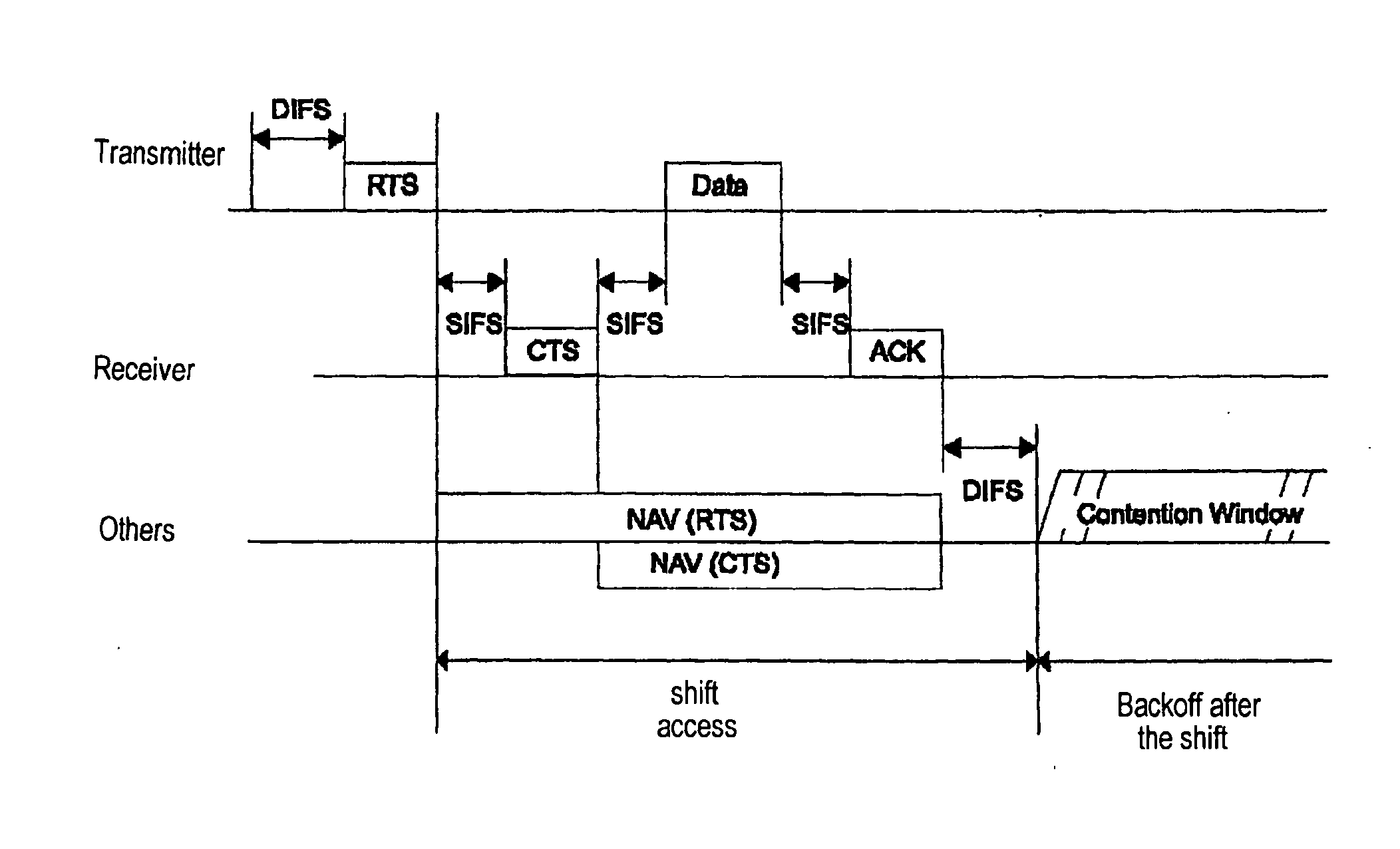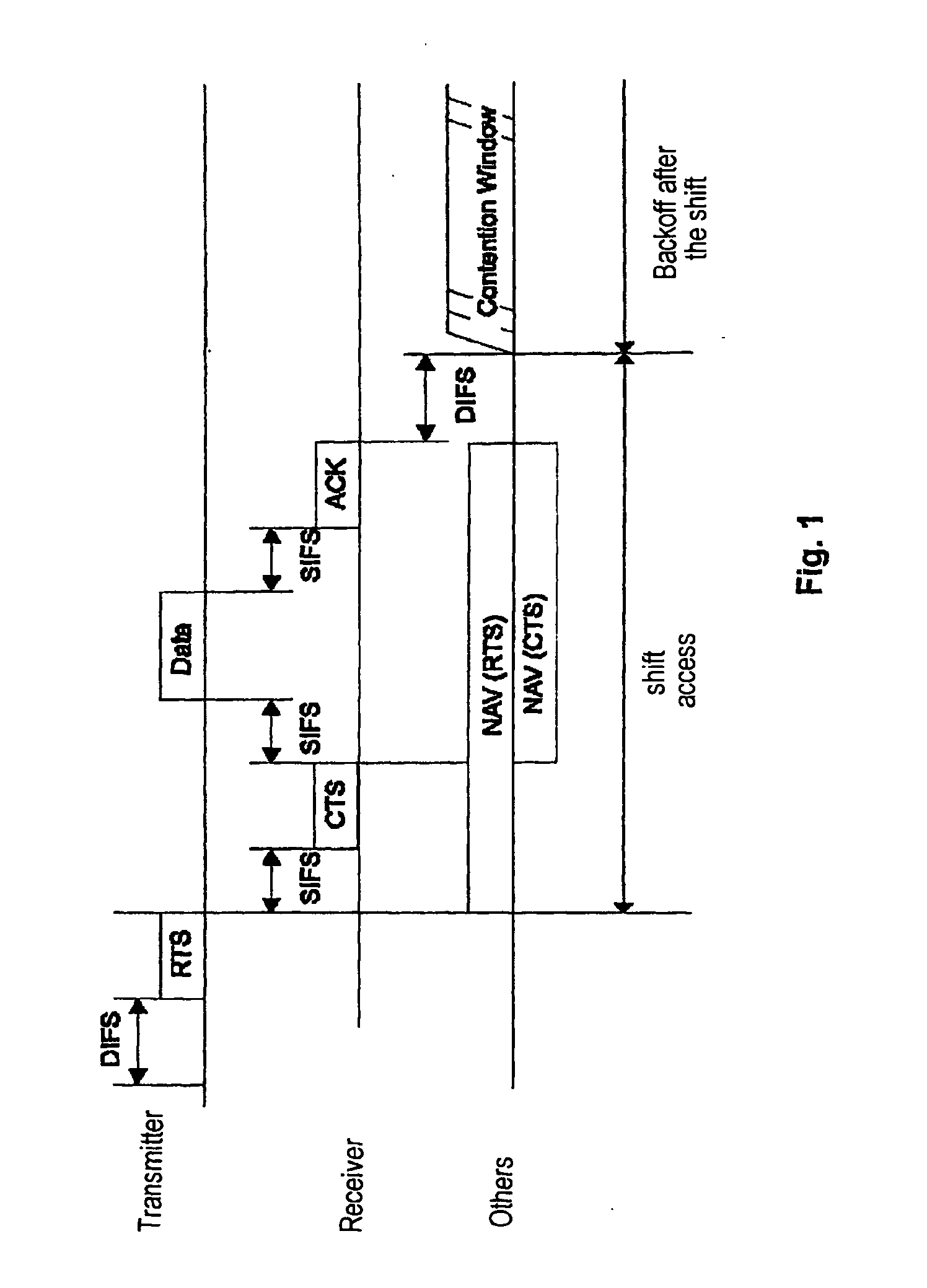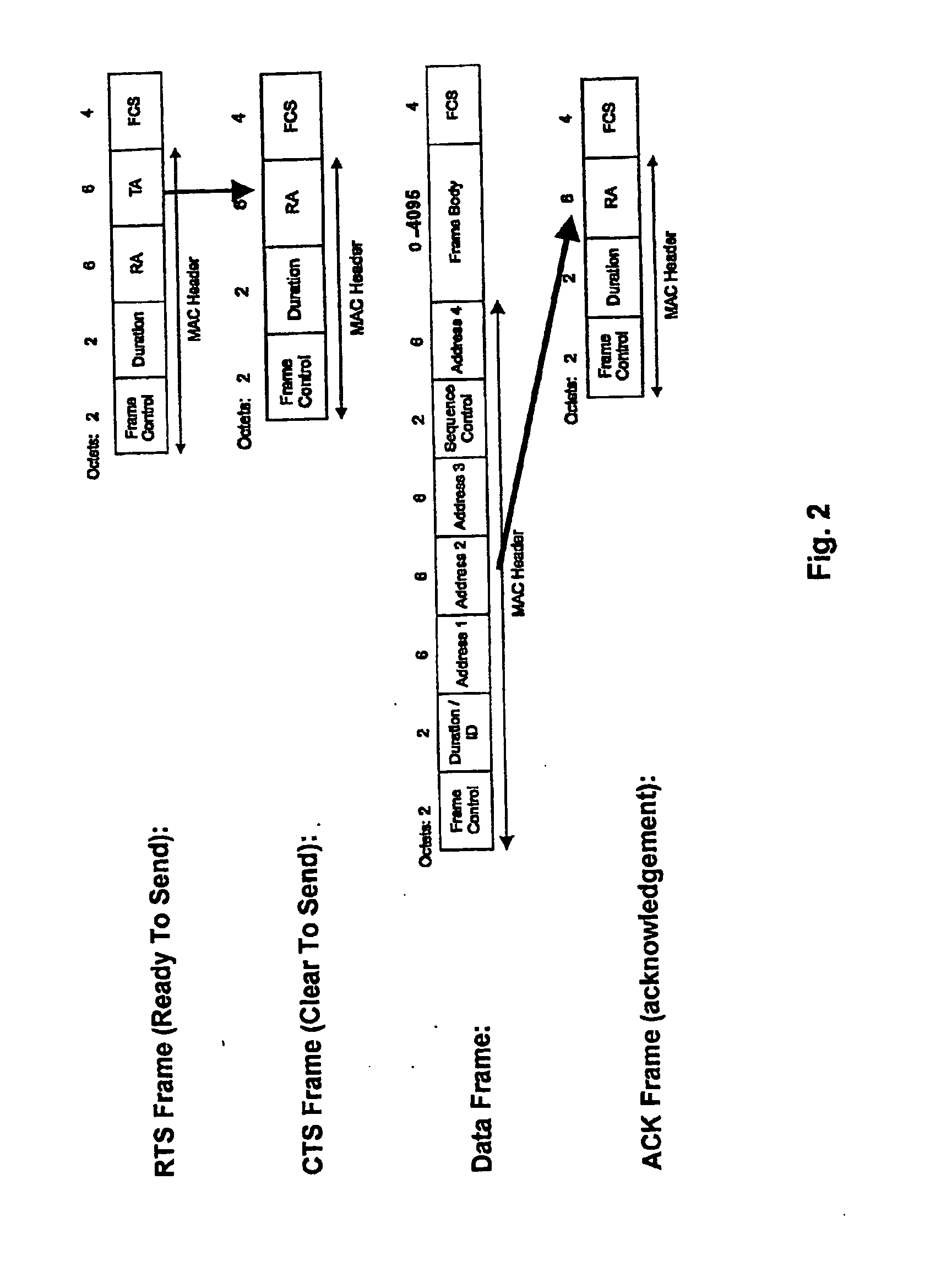Adaptive modulation and other extensions of the physical layer in multiple access systems
- Summary
- Abstract
- Description
- Claims
- Application Information
AI Technical Summary
Benefits of technology
Problems solved by technology
Method used
Image
Examples
Embodiment Construction
[0035] The fundamentals of the inventive signaling scheme shown in FIG. 3 correspond to those of the scheme shown in FIG. 1 and are thus based on Standard IEEE 802.11. However, as indicated by the thick arrows in FIG. 3, the content of the relevant data frame has been changed. To perform adaptive modulation an inquiry is made in the RTS signal of the transmitter about a bit loading table of the receiver. The receiver, in turn, integrates into its CTS message the bit loading table which it has calculated on the basis of pilots of the RTS signal. The bit loading table received by the transmitter in the CTS message is used by the transmitter to send the data in the data packet “Data.”
[0036] A second signaling scheme is indicated by the thin arrows in FIG. 3. In this scheme, the receiver requests a bit loading table from the transmitter in a CTS message. The latter calculates a current bit loading table for the forwards channel on the basis of pilots from the CTS signal and integrates t...
PUM
 Login to View More
Login to View More Abstract
Description
Claims
Application Information
 Login to View More
Login to View More - R&D
- Intellectual Property
- Life Sciences
- Materials
- Tech Scout
- Unparalleled Data Quality
- Higher Quality Content
- 60% Fewer Hallucinations
Browse by: Latest US Patents, China's latest patents, Technical Efficacy Thesaurus, Application Domain, Technology Topic, Popular Technical Reports.
© 2025 PatSnap. All rights reserved.Legal|Privacy policy|Modern Slavery Act Transparency Statement|Sitemap|About US| Contact US: help@patsnap.com



